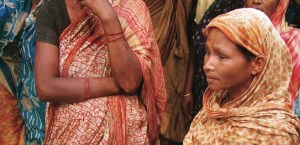 Article by Jarrod Ormiston
Article by Jarrod Ormiston
Jarrod Ormiston is the Editor-in-chief at shorts.sounds.social and a social entrepreneurship researcher at the University of Sydney
This year marks the five-year anniversary of Muhammad Yunus and Grameen Bank winning the Nobel Peace Prize for their efforts to create social and economic development from below through micro-credit. Micro-credit refers to the lending of small loans (often as little as $25) without collateral, to societies’ poorest. While to some this definition might bring to mind the local ‘loan shark’, micro-credit, or microfinance, has been associated with eradicating poverty, and has been championed throughout the world by aid agencies, Western governments and NGOs alike. Proponents of microfinance cite the low incidence of loan default across the over 160 million borrowers worldwide as evidence of the concept’s value. Although this sounds great, some significant questions remain at the heart of the dialogue around this fledgling idea: how are the lives of borrowers improving and how are they paying back these loans?
 Enter Danish investigative journalist and filmmaker, Tom Heinemann. Stumbling upon the world of Yunus, Grameen and microfinance in Bangladesh in late 2006, he was intrigued by what was being hailed as the new number one solution in poverty reduction. After merely scratching the surface, however, Tom discovered the dark side of microcredit. His investigation led to a lengthy series of interviews in Bangladesh, India and Mexico that revealed a similar pattern: most borrowers had taken out a myriad of loans from different NGOs, with many taking out new loans to cover old. Rather than lifting themselves out of poverty they had become trapped in a debt-cycle, they were suffering social pressures under the group borrowing structures and facing abuse from loan officers.
Enter Danish investigative journalist and filmmaker, Tom Heinemann. Stumbling upon the world of Yunus, Grameen and microfinance in Bangladesh in late 2006, he was intrigued by what was being hailed as the new number one solution in poverty reduction. After merely scratching the surface, however, Tom discovered the dark side of microcredit. His investigation led to a lengthy series of interviews in Bangladesh, India and Mexico that revealed a similar pattern: most borrowers had taken out a myriad of loans from different NGOs, with many taking out new loans to cover old. Rather than lifting themselves out of poverty they had become trapped in a debt-cycle, they were suffering social pressures under the group borrowing structures and facing abuse from loan officers.
(Full article here.)